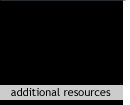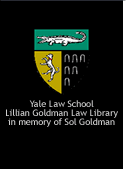
 |
 |
Role of the Legal Profession - produced by Yuval Miller & Rob Parker WEBSITES USED IN PRESENTATION ANNOTATED BIBLIOGRAPHY
This article by South African poet Antjie Krog discusses the increasing number of apartheid-era criminals seeking amnesty in 1996. Mitchell was among the first of those to seek amnesty.
This article provides an excellent overview of the structure and functions of the South African police throughout apartheid. In particular, see the discussion of the kitskonstabels (“special constables”) that helped foment violence between black resistance organizations in Kwa-Zulu Natal.
This transcript of a speech by journalist Jacques Pauw discusses the phenomenon of the “police culture” that led many white South African police officers in the 1970s and 1980s to honestly believe that they were under attack from black “terrorists” and were justified in using all means necessary to protect the white regime.
The TRC’s official report on the role of the South African security forces in upholding apartheid provides a definitive and comprehensive analysis of the activities of the police in South Africa during the apartheid era. In particular, it details many of the atrocities committed by the security forces against anti-apartheid activists and the black population as a whole, and discusses the amnesty applications of security officers.
This is the TRC’s official report on the activities of the African National Congress and allied organizations such as the United Democratic Front (UDF) during apartheid. It provides details of the interplay between different organizations and details alleged atrocities committed by black resistance organizations. It also discusses the amnesty applications of members of the ANC and affiliated organizations.
This is the TRC’s official report on the “Third Force”, the white regime’s strategy to foment violence between black resistance organizations. It provides an excellent discussion of the role of the police in starting and perpetuating the internecine conflict between the ANC and Inkatha that raged in Kwa-Zulu Natal in the 1980s and early 1990s. This conflict killed thousands of people.
This is the TRC’s official report on the activities of the Inkatha National Cultural Liberation Movement during apartheid. It provides details of the interplay between Inkatha and other resistance organizations, the collaboration between Inkatha and the white regime, and Inkatha’s role in internecine violence in Kwa-Zulu Natal that killed thousands of people in the 1980s and early 1990s.
This short article provides an excellent overview of the internecine violence in Kwa-Zulu Natal, of which the Trust Feed massacre was a part.
This lengthy report by Human Rights Watch details the role of the security forces throughout South Africa in extrajudicial killings and other human rights violations during the apartheid era. The report is divided into sections that discuss the human rights situation in each region of South Africa. In particular, see the section on Kwa-Zulu Natal, and especially the section on Pietermaritzburg, for an excellent background to the Trust Feed massacre.
This report by Amnesty International provides an excellent study of the role of prosecutors in enforcing and upholding apartheid on the one hand, and prosecuting crimes committed by members of the white regime on the other. In particular, see the short discussion of the Trust Feed massacre and the investigation of Brian Mitchell.
This article discusses Brian Mitchell’s trial for the Trust Feed massacre and reports on his death sentence.
The ANC’s statement in reaction to the death sentence imposed on Brian Mitchell expresses its satisfaction with the guilty verdict, but also its opposition to the death penalty and preference for a sentence of imprisonment.
This law governed the Truth and Reconciliation Commission’s mandate and activities. In particular, see the provisions and requirements relating to amnesty.
This article discusses the failures of the Amnesty Committee to elicit truthful testimony, using the Mitchell case as an example. The article argues that significant discrepancies between Mitchell’s trial testimony and his testimony before the Amnesty Committee raise doubts as to the veracity of the amnesty process.
This is the complete transcript of Mitchell’s amnesty proceeding.
This is the Amnesty Committee’s decision granting amnesty to Brian Mitchell.
This is an excellent clearinghouse for information related to the debate over whether or not to grant amnesty to perpetrators of grave human rights abuses. In particular, see the links to major academic and practical writings on this subject.
This speech by Archbishop Desmond Tutu, chairman of the Truth and Reconciliation Commission, sets forth his vision of reconciliation and forgiveness in past-apartheid South Africa.
This article discusses the role of reparations in South Africa and other post-conflict states, and makes recommendations on how to best assure that reparations contribute to a process of healing and reconciliation.
This is a transcript of a speech by South African Deputy President Jacob Zuma at a renewal ceremony in Trust Feed in 2003. In particular, see Zuma’s praise for Brian Mitchell’s fundraising and development efforts on behalf of the citizens of Trust Feed.
|
|
| Return to Multimedia Page | Bibliography | |
|